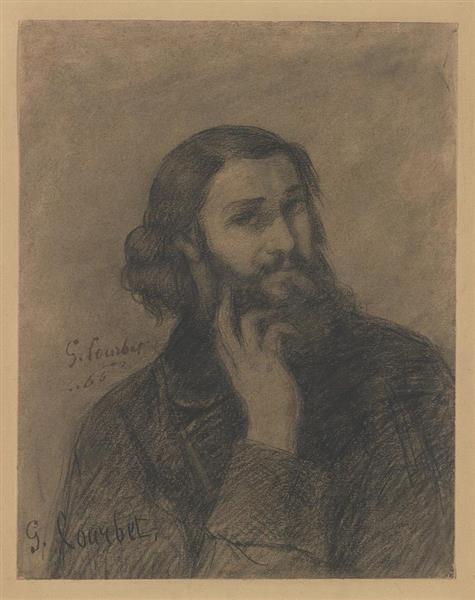Descrição
Gustave Courbet's painting "Self-Portrait" is a powerful visual statement that encapsulates not only the artist's technical skill but also his deep philosophical commitment to realism and the exploration of the self. A central figure in the 19th-century realist movement, Courbet is characterized by his focus on the honest, unadorned depiction of everyday life, a tendency that becomes evident in this self-portrait. Created around 1843, this work is a testament to the search for personal identity in a period when European art was torn between academic traditions and new currents of modernity.
The composition of the self-portrait is remarkable for its simplicity and forcefulness. Courbet presents himself in the foreground, looking directly at us with an expression that conveys both confidence and introspection. The placement of his figure on the canvas suggests a special attention to the space he occupies, symbolizing his conviction that the artist is a being actively engaged with his work and his environment. This choice also invites the viewer to reflect on the figure of the artist in the context of the society of his time.
The colours used by Courbet are rich and earthy, with dark hues predominating and framing his figure, emphasising his presence in the work. The use of deep shadows and the varied palette of browns reinforce the sense of volume and three-dimensionality, as well as the vitality of the facial features. In the lower part of the painting, a few loose brushstrokes suggest an indistinct background, allowing the viewer's attention to focus almost entirely on the painter's figure. This focus on the face and the details of the hair and clothing creates a visceral connection with the viewer, turning the painting into an intimate manifestation of their being.
An interesting aspect of this self-portrait is the way Courbet challenges the conventions of traditional artistic representation of his time. Far from idealized beauties or rhetorical poses, here he presents himself with a raw sincerity. He is an artist who shows himself vulnerable, reinforcing the idea that art should be an extension of the individual, even in its most imperfect aspects. This authentic tone places him in contrast to other contemporary artists who tended to opt for a more decorative and technical approach.
Compared to his contemporaries, such as the Romanticism of Eugène Delacroix or the Neoclassicism of Jacques-Louis David, Courbet radically overturns the notion of the “artist” as a distant being; instead, he becomes a figure who seeks direct and effective connection with the viewer. This self-portrait supports the ideas that Courbet defended: that art should reflect reality rather than idealize it.
Gustave Courbet, through this work, offers us not only a representation of himself, but also a philosophical statement about authenticity and the role of art in society. This self-portrait invites us to contemplate not only the figure of the artist in the history of art, but also to reflect on the authenticity of individual representation in a world that is beginning to search for its own voice. Consequently, the work becomes a beacon for future generations of artists who advocate honesty and raw reality as inexhaustible sources of inspiration and creativity.
KUADROS ©, a famous painting on your wall.
Hand-made oil painting reproductions, with the quality of professional artists and the distinctive seal of KUADROS ©.
Painting reproduction service with satisfaction guarantee. If you are not completely satisfied with the replica of your painting, we will refund 100% of your money.

